Reworked engine, longer gearing, new electronics, spicy aesthetics – What seems to be a small update at the outset, actually runs much deeper. Does TVS finally have a street winner in the new Apache RTR 310? We test it on the road and track to find out.
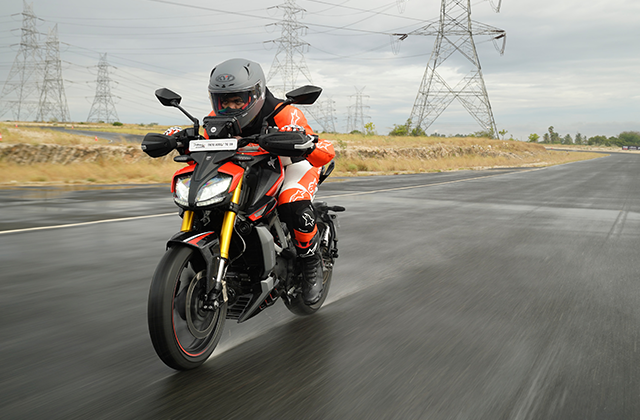
The TVS Apache RTR 310 has largely been the underdog in a segment dominated by KTM and Yamaha street-nakeds, and there is no obvious reason why. After all, the TVS is a well-tailored bike in its own right, with a power-dense engine paired with a lovely quickshifter and an impeccable hybrid trellis-frame that carves corners like a scalpel. Sure, it had its weaknesses too, some of them being its vibey engine, shorter gearing ratios and, of course, the price.
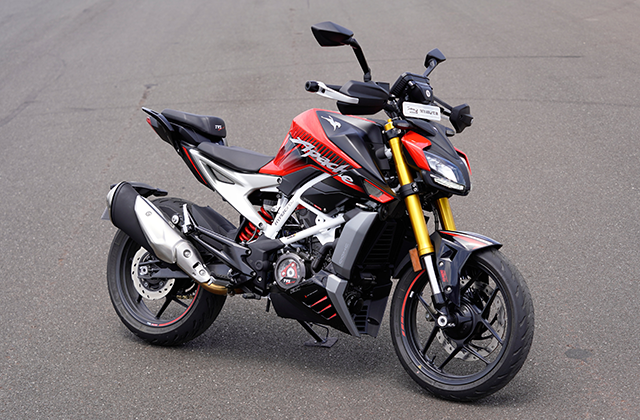
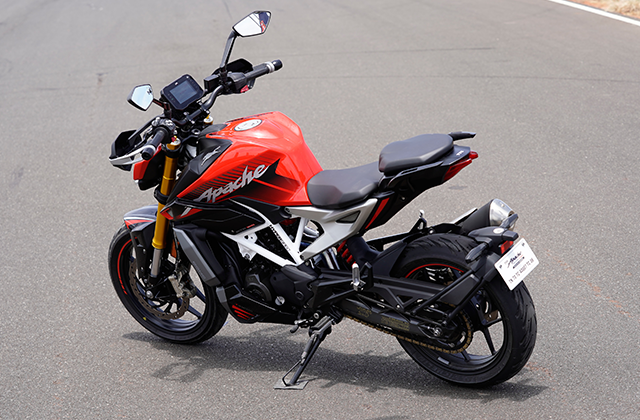
In fact, TVS is so confident about the job that they have done with the RTR 310 update, that they invited us for a media drive that started early in the morning from our hotel in Coimbatore. Taking us through wide highways, narrow villages, and twisty sections, the ride finally culminated at the CoASTT High Performance Centre for a proper track run.
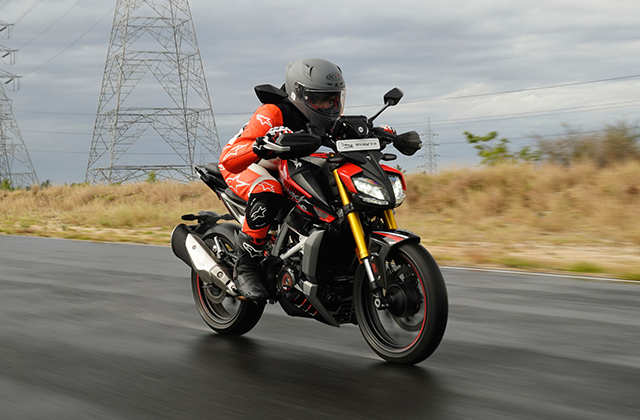
Now to the changes. The 312.12-cc, reverse-inclined, liquid-cooled, single-cylinder engine has received a makeover so extensive, it would put the Kardashians to shame. Armed with a lighter forged piston, improved piston ring design, reworked DOHC cylinder head, and rerouted exhaust piping, TVS have done a commendable job of tackling this bike’s major pain-point: the vibrations. The RTR 310 is now much more refined, the buzz from the handlebars gone. Above 5,000 RPM, however, the seat would serve much better as a seismograph.
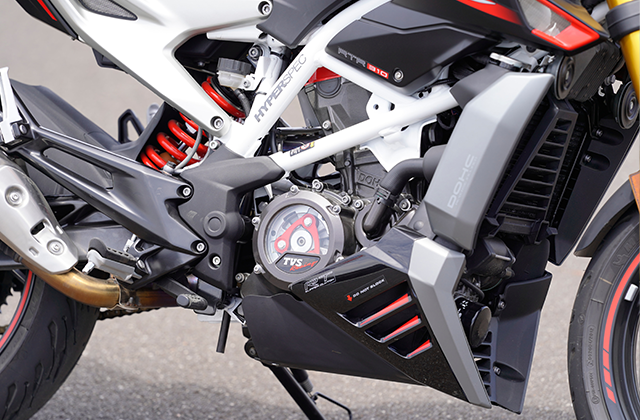
The larger electronic throttle body from the RR has also found its way to the RTR, with five riding modes on offer – The Track, Sport, and Supermoto modes unleash an unchanged 35 hp at 9,700 rpm and 29 Nm at 6,650 rpm, while the Urban and Rain modes restrict power delivery to 27 hp at 7,650 rpm and 27 Nm at 6,700 rpm. We however are hard pressed to believe that the power figures have remained unchanged after such a substantial engine rework, especially when the same unit puts out 37.5 hp in its RR310 guise. The engine feels freer while revving and while I am still not a fan of the engine sound, it has matured to become a more pleasing note, especially as the revs keep rising.
There’s also a gorgeous transparent clutch-cover that is sure to grab a lot of eyeballs at every stop-light and biker meets. It provides a lovely view of the clutching action, encouraging you to do a better job at showing off your technical knowledge to your uninterested first date.
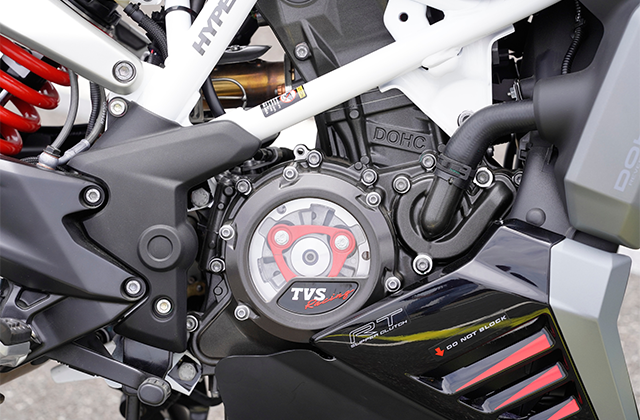
The electronics have received a significant update; there’s a new launch control module that helps you get off the line with more consistency. While it’s a cool feature to have, I do not see much point in opting for it if you wish to use your bike for road purposes. The cornering drag torque control does a great job at ensuring the rear wheel does not lock up during aggressive engine braking and downshifting, and though I did not feel the cornering ABS or traction control interfering during my track session, they are good features to keep handy and may just save you from a mishap some day.
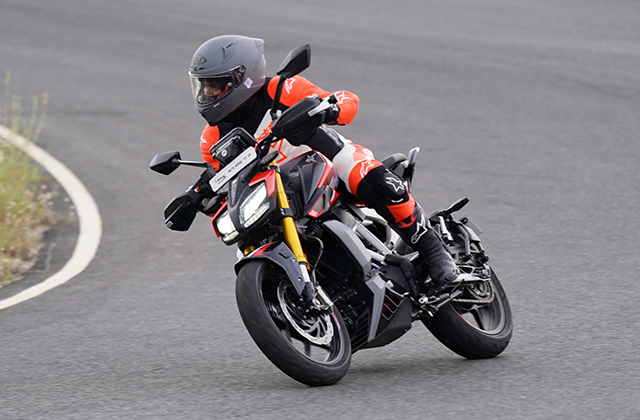
The gearing has also been revised from 46T rear/17T front to 42T rear/16T front, bringing the final drive down from 2.7 to 2.62 and resulting in a slightly higher top speed of 164 km/h. We were able to see numbers as high as 155 km/h and the RTR is now better suited for touring. Being a sports-naked, the bike is still susceptible to wind-blasts and aerodynamic pressure differences that impact you when overtaking large trucks on highways. Regardless, its raised handlebar blueprints a riding triangle relaxed enough to encourage riding over a longer period of time. The footpeg positions have remained the same, set slightly lower than the RR310, which scrape easily during enthusiastic cornering however.
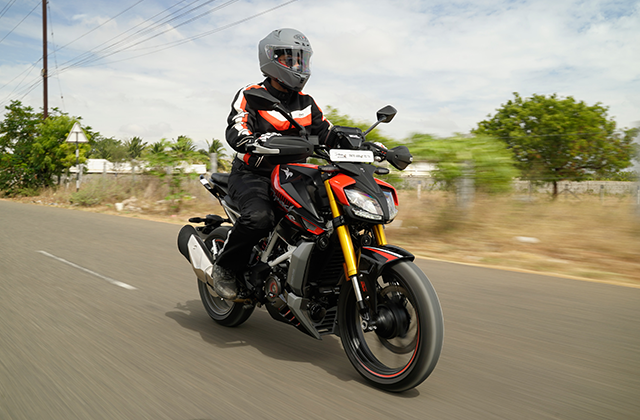
The factory setting of the fully adjustable 41-mm KYB forks and rear mono-shock are perfectly tuned for spirited street-riding. The motorcycle takes rougher patches in its stride while doing a superb job at keeping both 17-inch wheels wrapped in Michelin Road 5 tyres in contact with the ground at all times. There are minimal interferences from the road and the bike keeps on goading you to ride faster, no matter how the road surface is. If one wishes to make the most out of it on the track though, the setup has room to be much stiffer as we found the front to dive under triple-digit heavy braking.
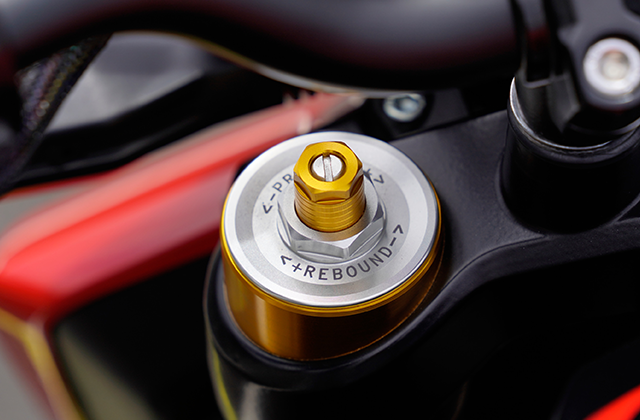
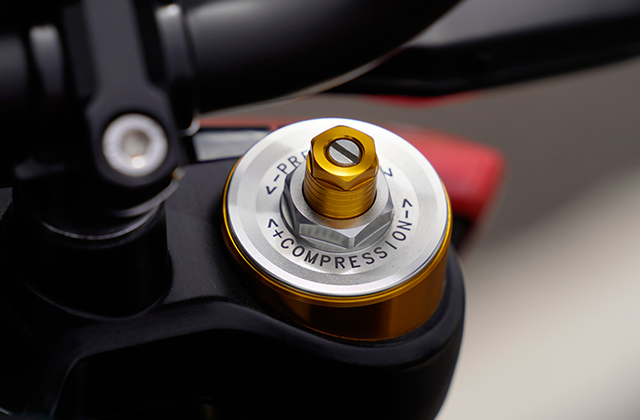
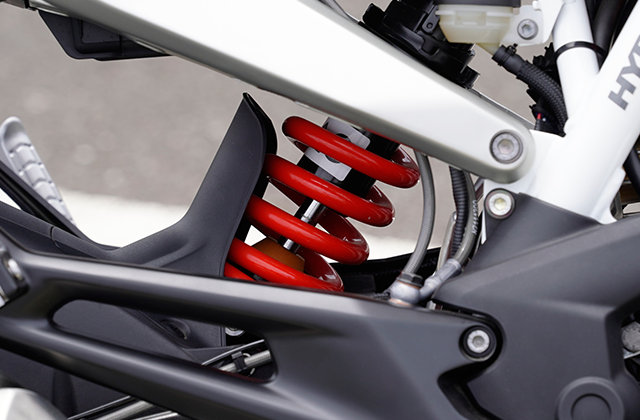
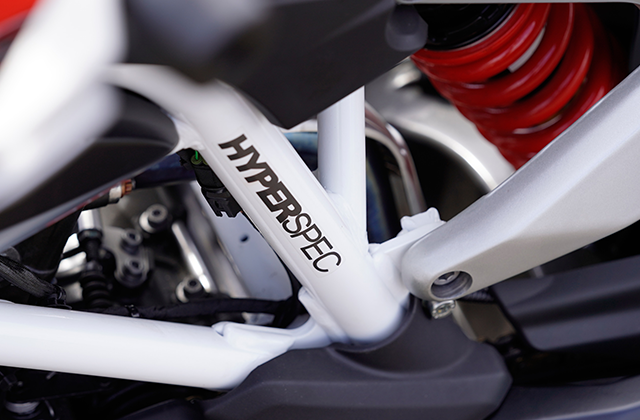
The bi-directional quickshifter comes alive above 2,500 rpm and changes gears without missing a single beat. An absolute joy to use, it handled every aggressive shift at the street and track with great diligence and not a single clutchless shift was missed throughout the day. The RTR also gets sequential turn-signal indicators and knuckle guards along with keyless ride, and there are four different shades on offer – Fiery Red, Fury Yellow, Arsenal Black, and Sepang Blue which is only available with the BTO (Built-To-Order) variant.
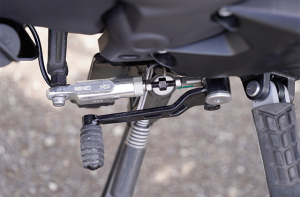
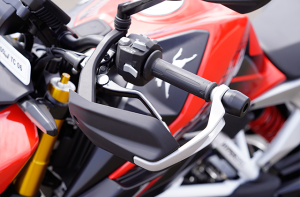
Now coming to the price. The base variant gets an introductory price of Rs 2.4 lakhs ex-showroom, with the top and BTO variants coming in at Rs 2.57 lakh and Rs 2.75 lakh respectively. The base variant gets linear traction control, drag torque control, and rear wheel lift protection. The top model gets the bi-directional quickshifter in addition, while the BTO Dynamic Kit adds TPMS, brass-coated chain, and adjustable suspension to the mix. The BTO Dynamic ‘Pro’ Kit is the most loaded, with keyless ride, launch control, and TVS’s Race Tuned Dynamic Stability Control.
All-in-all, the TVS Apache RTR 310 is a bike that is difficult to nitpick, and TVS has done a good job at ensuring that it gets a stronger chance at competing in this fierce segment. With a well balanced chassis, more neutral ergonomics, and a torque-rich engine, the RTR 310 is a strong candidate for riders looking to get into spirited riding or stunting with minimal modifications. It is also the only way one could have the 312-cc engine from TVS without committing to the aggressive position of the RR. The abundance of customisation options from the BTO kits, while pricey and confusing, allow a vast degree of freedom and personalisation for the owners who can tailor the RTR according to their needs.
Story: Abhisu Poddar
Photography: Sanjay Raikar
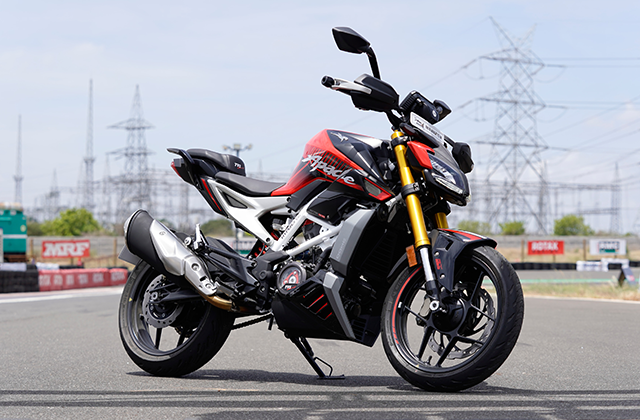
Also read: 2025 Royal Enfield Hunter 350 Review


Leave a Reply